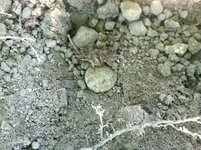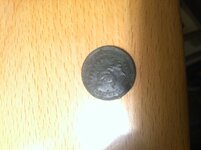mangum
Bronze Member
- Jul 2, 2012
- 2,319
- 3,525
- 🏆 Honorable Mentions:
- 1
- Detector(s) used
- AT Pro, MXT Pro Back-up
- Primary Interest:
- All Treasure Hunting
I found an 1883 IH which I ruined by going against my own advice... I used the toothpick method which is fine & I recommend... BUT there was a lot of crud that I couldn't get off so I figured WTH, I'll try to remove the rest of the crud with hydrogen peroxide since everyone speaks highly of the method. I heated a bit to a boil in the microwave & left it in for 5 minutes. Now I have a dark, almost black coin & the date is barely legible (you can see the pic when I dug it, looked way better) Did I do something wrong? I should have left it alone but oh well, I've found some really nice IHs this year, can't complain. I'll just give this one to the landowner, he'll be happy to have it. Is there anything I can do to make this better? I hate that I lost the green patina. I usually just toothpick & use no water on IHs & they usually turn out great. Has anyone else ruined an IH this way? I posted these same questions in Today's finds but my post disappeared to the bottom quick (maybe I should have put memorial penny found & got more replies lol)






 I found one that was very encrusted not even readable. I heated my peroxide to just warm on a light bulb in a glass and let it slowly work. Yes it turned it black but the coin was toast. I did not boil the peroxide as people say just warm and slow and tooth picked along the way.
I found one that was very encrusted not even readable. I heated my peroxide to just warm on a light bulb in a glass and let it slowly work. Yes it turned it black but the coin was toast. I did not boil the peroxide as people say just warm and slow and tooth picked along the way. 





